失落的理想与追问
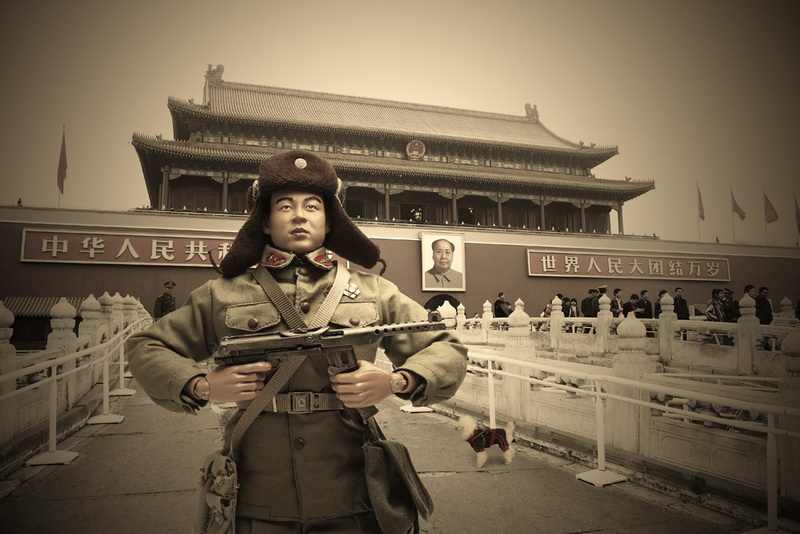
失落的理想与追问
鲍昆
1962年8月15日,一位叫雷锋的沈阳军区工程兵运输连的中士士兵,在工作中负伤后抢救无效牺牲,年仅22岁。这个年轻的小战士,在他瞬间失去知觉的时候,绝对不会想到他的名字和未来一段的中国历史发生那么深厚的关系。
在雷锋不幸殉职的半年以后,在1963年初春的3月5日,中国人民的领袖毛泽东以手书题词的方式,向全中国人发出了”向雷锋同志学习”的伟大号召。从那一刻起,雷锋这两个字成为中国所有媒体上出现频率最高的符号。随着这个符号出现的,是雷锋感人的日记与事迹。在当时还未走出经济困境阴影的中国社会,与雷锋名字相伴的还有一系列的关键词,它们是”艰苦”、”解放台湾”、”抗美援越”、”人民公社”、”三面红旗”、”总路线”……,等等。这些时尚的,充满了政治意识形态的词汇共同构成了那时整个中国社会的生活语境。在这些符号性的词汇中,”雷锋”是最耀眼的,而且是完全形象性的。和那些理念式的空洞的政治概念完全不同,雷锋的形象非常具体,既有一串串感人的故事,也有着可以上升到阅读体验层面的”日记”文本。他是一个新时代的圣经故事,有着圣人不能缺少的”箴言”。雷锋留下了许多任何人都值得铭记学习的语录,譬如:
”人的生命是有限的,为人民服务是无限的,我要把有限的生命,投入到无限的为人民服务之中去。”
“对待同志要像春天般的温暖,对待工作要像夏天一样火热,对待个人主义要像秋风扫落叶一样,对待敌人要像严冬一样残酷无情。”
这些语录具有永恒的普世价值,是任何人想要超越生命物质的极限,进入完美精神世界需要守持的理念。它极其完满地契合了自上世纪初期兴起,由无数为了中华民族自由独立而献身热血的志士仁人的社会革命理想,也完全符合两千多年来深藏在中华民族性格深处的文化精神。它是中华先贤孔孟等的博爱之道与立世安身精神的现代版本,却又充满了现代革命激昂的色彩。雷锋的事迹和他的日记,给自1949年以后以毛泽东为首的中国共产党的社会主义社会实践注入了丰富而鲜活的内容。任何一场革命都离不开英雄精神的激励,英雄正是一次次革命运动前行的旗手。雷锋就是这样一个在历史需要的时刻出现的英雄。陪衬和呼应英雄雷锋的历史语境是曾经积弱贫穷一百多年的中国社会,是曾经腐败沉沦一百多年的社会伦理,是经过这一切忽然因1949年革命在政治上成功而凝聚起的一股浪漫超然的民族斗志,是因此而兴起的建设伟大复兴中国的梦想激情。
在毛泽东向全国人民发出学习雷锋的号召之前,在1962年9月的八届十中全会上,毛泽东提出”千万不要忘记阶级斗争”的口号。这一口号后来成为指导中国社会政治生活长达15年的纲领。1964年,北京电影制片厂推出了由资深编剧谢铁骊执导的《千万不要忘记》故事片电影。这部电影是根据哈尔滨话剧院上演的同名话剧改编,剧情为毛泽东的阶级斗争理论提供了视觉形象性的铺垫阐释。毛泽东的政治主张,将”雷锋”,以及后来的”欧阳海”、”焦裕禄”等一系列的社会主义时期的英雄形象与”阶级斗争”连接在一起。这些英雄形象无一不是为了社会主义理想奋不顾身,舍生取义的模范,为毛泽东的阶级斗争理论提供了新社会道德伦理的背景,为其阶级划分和斗争注入了强大的道德力量。除开毛泽东在具体政治上的考虑和策略,我们应该客观地肯定他为了在中国实现共产主义社会理想的浪漫一面。在中国共产党接手中国大陆之前,中国两千多年来建立在农耕社会之上的道德伦理文化系统,已经被自1840年以来的西方帝国主义全球化所带来的西方资本主义社会文化观念所动摇,甚至是崩溃。1949年之前的中国大部分社会,贪官污吏横行,阶级分化严重对立,贫富差距如云泥鸿沟,中华先贤道德思想维系的社会平衡机制已经荡然无存,自私自利的小农意识借西方适者生存、物竞天择的丛林法则理念被恶性的放大,整个社会是个物欲横流极端自私自利的泥沼。以毛泽东为首的中国共产党希望以西方马克思主义的共产主义理想来重建中国社会的道德伦理系统。雷锋的事迹正是高度符合这一宏观理想和具体策略的政治符号。他的青春形象,和中国人民解放军战士的身份不但符合新社会的一切要求,而且也接续了为建立新中国冲锋陷阵的人民解放军所建立起来的子弟兵形象传统。
在官方强势推动的雷锋精神的感召下,上世纪六十年代前半期的中国社会的新道德风气骤起,无数的人们以雷锋为榜样,为社会做各种各样的好事。雷锋故事中最核心的部分是对于毛泽东思想的学习,所以”学习雷锋,做毛主席的好战士”这一口号才是这场道德文化运动的核心所在。也因此,人们在实践上学习雷锋,效仿雷锋,在理论上学习毛主席著作,形成了在无产阶级文化大革命之前四年的主要社会生活内容。还是因此,毛泽东思想最通俗的读本老三篇–《为人民服务》、《愚公移山》、《纪念白求恩》和当时的中央军委副主席林彪推崇的小红书《毛主席语录》,成为六亿中国人民日修的必读课。这一切,都为一九六六夏末狂热爆发的无产阶级文化大革命做了充分和扎实的思想舆论准备。吊诡的是,当那场风暴来临之后,雷锋这一初始的,给予这场革命理由之一的符号,迅即随着震耳欲聋的风声雨声消逝了。甚至,在那狂飙混乱的时期内,雷锋居然也成了狂躁人们质疑的”修正主义”目标,这肯定是毛泽东和林彪所初始未料的结果。在那段时间内,社会遗忘了”好人”、”好事”,和”对待同志要像春天般的温暖”的温情,代之以的是尖锐的人际之间的对抗和相互否定。
重提雷锋已经是十多年以后的事情了。文革后政治稳定之后,为了恢复曾经沦落的社会伦理价值,雷锋被人们重新想起。无奈的是,雷锋这一建立在纯粹的共产主义理想之上和社会文化革命背景中产生的符号,已经被迅速需要经济上致富,文化上需要开放的社会改革欲望抽去了它赖以依托的背景。雷锋再次被遗忘了。他那张纯朴善良的笑脸,成了渐行渐远的历史符号,最终成为艺术商品市场上一个类型化的政治波普艺术的元素。
从1978年历史性的中国共产党十一届三中全会始,中国进入了全面性的改革开放的时代。这场中国几千年之未有的大变局,让中国从被动的全球化转为主动融入的全球化。三十多年来,中国全面的市场经济化、产业资本化,在短短的三十年内创造了五千年累积都无法达到的物质成就。在这一过程中,中国几千年积淀的文化精神和半个多世纪构建的马克思主义的社会主义意识形态都收到了前所未有的冲击。1949年以来的基本消灭的阶级差别也重新强势的出现,社会结构出现撕裂,各种矛盾冲突尖锐对立。人们传统的道德伦理观念也在这场巨变中失落了。任何一个有前途的社会都是一个有理想追求和道德制约的社会,同样,这在今天泥沙俱下的中国也是一个必须重视和重新思考的问题。物质可以解决生理舒适的问题,但却无法解决精神幸福的问题。我们在努力前行的物质化进程中,是不能抛弃这一更本质的价值维度的。
天津青年艺术家戴翔的影像艺术作品《新雷锋故事》正是在这个微妙的时刻出现的。他以艺术的方式提出了对上述诸多问题的思考。他非常巧妙地以那些半个世纪之前人们耳熟能详的具有极强的时代指代性符号的雷锋作为他艺术展开的情节,并把它们放入今天的社会文化语境之中。这形成了一种效果十分强烈的戏剧性的冲突,让雷锋这一早已死去的政治性的符号复活了。我们可以在他精心结构的影像之中,看到他把原雷锋故事那些最具有代表性的情节梗概放置在充满当下社会情境的符号系统之中,最终导演了一出符号之间的戏剧和战争。雷锋依然是秉承助人为乐的精神,出现在各种各样的公众场合–他访贫问苦、扶危救难;他去街头做义务公益劳动,铲除现在城市癣疥的小广告;他出席报告会,向公众宣讲为人民服务的思想。戴翔注重了场景与雷锋的关系,在许多细节的铺陈中把雷锋这一符号悬置了。于是,历史的雷锋与现实的雷锋有了强烈的错位感,其结果也产生了一种奇怪的讽喻。
这个讽喻既可指向雷锋精神与实际生活之间某种乌有性的本质关系,也可指永恒的理想和多变的现实之间被割裂的关系。戴翔将雷锋的形象安置在流行商品代言人的广告牌上,则是其系列作品中颇具份量的一帧。戴翔用这一帧影像尖锐地指出了当代资本主义野蛮霸道的本质,控诉它们为了追逐利润所使用手段的恶劣,没有什么可以挡住资本无耻的囊括性。它们一切均可利用,包括本来作为它们敌人的革命性符号。这是一个极其深刻的揭示,有一种刀锋般的犀利感。戴翔还特意突出了现代传媒与雷锋的关系,雷锋坐在照相机镜头前,行走在电视摄像机镜头前。戴翔的这一经营结构,不但暗示如果雷锋还活在今天必然是媒介喜爱的材料和宠儿,也暗示了雷锋这一符号的产生和政治操作与传播手段剪不断理还乱的微妙关系。
戴翔在这组新雷锋故事的演绎中,讲述了一个虚构但却强烈符合历史逻辑的荒诞故事,进而让我们反思理想的价值与意义。他提醒我们,在紧锣密鼓的物质现代化和全球化的追求中,我们遗忘了什么?我们最终要的是什么?雷锋这时已经不仅仅是一个艺术的话题材料,更是我们每个人内心深处的一处伤疤。历史、现实,道德、情怀,这些才应是构成完整的今天我们的要素。我们在建立起无数的高堂华厦和蛛网般的高速铁路、公路的时候,我们的灵魂是否还需要有一个依托?戴翔影像中的雷锋,总是有着一股纯粹质朴透明的表情,他是超越政治的,是指向历史深处的一种人类情怀,和我们先贤的人文思想黯然相动。
再有,戴翔的新雷锋故事也解答了中国当代艺术的一些问题,比如如何在当代艺术中使用历史的政治符号?戴翔没有简单的、标签式的将雷锋这一符号做政治波普式的解读,没有把他仅作为申斥或揶揄历史的面具。戴翔的新雷锋故事具有一种现实主义手法的故事性,但也正因为如此,戴翔对于历史的观察和对现实的思考,得以通过细节的铺排非常丰富地展开。这是很长时间充斥着类型化和简单化的中国当代艺术最为缺失的态度和方式。我们相当众多的艺术家在火爆的市场诱惑下,是不屑于做这种认真的思考和劳动的,于是导致了中国当代艺术观念上的简单和方式上的粗暴与粗鄙。中国的当代观念艺术大多经不起推敲,往往是”点子”和”窍门”的取巧,不具优秀艺术”耐人寻味”的审美要求。戴翔的新雷锋故事则可以让我们返回具体的历史和人性,在调侃和沉思中审视我们自己和观照我们严峻与失望的现实。
2010-6-3
本文发表在《艺术时代》2010年10月号上

The Lost Ideal and its Questioning
Bao Kun
On August 15, 1962, a Chinese sergeant named Lei Feng, who served in a transport company of engineer corps under Shenyang Military Command, was seriously wounded after an accident on road. Despite immediate medical treatments, he died at the age of 22. The young soldier, at the moment when he instantly lost his consciousness, would have never imagined his name being deeply involved with the Chinese history after his death.
Half a year after Lei Feng’s decease, in the early spring, Chairman Mao promulgated to the entire nation on March 5th 1963, the famous slogan “Learning from Comrade Lei Feng”. Since that moment, “Lei Feng” has become the symbol the most frequently appeared in the Chinese media. Along with the symbols were his affecting diary writings and all the storied related to his life. During that period when China was still overshadowed by its difficult economy, a series of key words emerged with “Lei Feng” such as “arduousness”, “liberating Taiwan”, “the war to resist US aggression and aid Korea”, “people’s communes”, “Three Red Banners” and “the general line”, etc. These vocabularies full of political ideology constituted the context of the Chinese society in that particular era. However among these symbolic terms, “Lei Feng” was the most remarkable and completely figurative. Unlike the theoretic and inane political terminology, the image of Lei Feng was rather concrete with not only affecting stories but also inspiring words written in his personal dairy. He was as if the holy Bible of the new era, with the indispensable “proverbs” from a Saint-like figure. Lei Feng left many quotations worthy of thorough studies. For example:
“Life is limited, but serving the people is boundless. I want to devote my limited life into serving the people boundlessly.”
“Comrades should be treated as kind as a spring. Work should be treated as fervent as a summer. Individualism should be treated as harsh as autumn winds wiping away fallen leaves, and enemies should be treated as ruthless as freezing winter.”
These quotations have eternal universal values, providing the concepts worthy of persisting in order to enter a perfect spiritual state beyond the limit of living matters. It perfectly corresponds to the social revolutionary ideals of innumerable courageous Chinese vanguards who dedicated their lives to the independence and freedom of the nation at the debut of last century. It also fits in entirely with the cultural spirit in the depth of the Chinese national character formed 2000 years ago. Furthermore, it’s the modern version of the social harmony depicted by Confucius and Mencius, yet full of passion of the modern revolution. Lei Feng’s stories and his diary enriched the content of socialist practice directed by the Communist party and Chairman Mao since 1949. No revolution can be separated off heroic spirit, and heroes happen to be the vanguards guiding the revolutionary movements. Lei Feng is such a hero emerging at a particular historical moment. Corresponding to the heroic Lei Feng, the historical circumstance was a society suffering from a century of recession and poverty, with social ethics devastated within a hundred years of corruption and degeneration. Then there was the spiritual unity of the entire nation generated by the political achievements in 1949, which inspired the passionate dream for a reconstructed and resurrected China.
Before the slogan “Learning from Comrade Lei Feng” was issued, Chairman Mao had advocated “Do not forget the class struggle” in September 1962 in the tenth plenary session of the Eighth Central Committee of China. This slogan then became the guiding line for Chinese social and political life for the following 15 years. In 1964, the Beijing Film Studio launched a feature film “Do not forget” written by Cong Shen and directed by Xie Tieli. The film adapted a homonymous drama which had been formerly performed in the Harbin Drama Theatre, providing a visual interpretation for Mao’s theory of class struggle. In Mao’s political ideas, a series of heroic images in the socialist period, such as “Lei Feng”, later “Ouyang Hai” and “Jiao Yulu”, must be related to the class struggle. These heroes sacrificed themselves for the socialist ideals, which provided a new context of social morality for Mao’s theory of class struggle. It also increased dramatically the moral force of Mao’s class division and struggle. Aside from Mao’s specifics political considerations and strategies, we may objectively approve the achievements of his dreamful socialist ideals for communism.
In fact, before the Chinese Communist Party took over the mainland, the Chinese moral and cultural system, founded upon a rural society more than two thousand years ago, had been shaken even damaged by the western capitalist cultural values along with the globalization of western imperialism since 1840. Furthermore, most part of China before 1949 was filled with corrupted and rampant officials, with serious confrontation between different classes and severe wealth gap between the rich and the poor. The well-balanced social mechanism under the traditional moral system had been long gone, and the egoistic “petty farmers’ consciousness” was magnified by the western social principle of “natural selection and survival of the fittest”, which resulted into a ruthless society thoroughly submerged into materialistic selfishness. It was by then when the Chinese Communist Party led by Mao Zedong started to reconstruct the social ethical and moral systems inspired by Marxism and the western communist ideology. Coincidentally, Lei Feng’s stories happened to be politically symbolic, which highly conformed to the macroscopic communist ideal and some specific strategies. His youthful visage and the identity as a People’s Liberation Army (PLA) man not only met all the demands of the new society, but also sustained the perfect image of the fearless PLA soldiers who founded the People’s Republic of China.
Thus, under the Lei Feng Spirit advocated strongly by the Communist Party, a new social morality was formed during the first half decade of the 1960s. Millions of people contributed to the society altruistically by learning from Lei Feng. The core of the stories of Lei Feng was to study Maoism, and the slogan “Learning from Lei Feng, be a good soldier of Chairman Mao” was in fact the essence of this ethical cultural movement. Learning from Lei Feng for social practice and studying the works of Chairman Mao for theoretic guidance had, therefore, become the main content of the Chinese social life during the four precedent years, before the “Great Proletarian Cultural Revolution” was launched. For the same reason, three of the most popular books of Mao, “Serving the People”, “Mister Simple of North Mountain”, and “In Memory of Bethune ” became compulsory everyday readings for 600 million Chinese people, along with the famous red book, “Quotations from Chairman Mao”, officially recommended by the vice Chairman Lin Biao of the Central Military Commission. Consequently a solid ideological and theoretic background had been abundantly prepared for the subsequent impetuous eruption of the Cultural Revolution. Paradoxically, when the political and cultural storm struck the entire nation in 1966, Lei Feng, the preliminary symbol which had given one of the reasons for this revolution, quickly vanished. In that chaotic period, he even became the “revisionist” target for some political fanatics, which certainly was out of the initial expectation of Mao Zedong and Lin Biao. During that time, the Chinese society had forgotten the definition of “a good person”, “a good deed” and “Comrades should be treated as kind as spring”, instead, there was full of sharp confrontation and mutual denial between one another in the society.
It was more than a decade later when Lei Feng was rememorized. The Chinese politics was stabilized after the Cultural Revolution, and Lei Feng was re-mentioned in order to recover the lost value of social ethics. Pitifully however, this political symbol, previously built upon a purified communist ideal in the specific social and cultural background of a revolution, was then deprived of its vitality by the increasing need for the social reform of rapid economic growth and largely opened culture. Lei Feng has been once again forgotten. His simple yet kind-hearted smile has gradually become a historical symbol and ultimately turned into a typecast element for political Pop art in the art market.
From the historic meeting of the third plenary session of the Eleventh Central Committee of China in 1978, China has entirely entered the new era under the policy of reforming and opening-up. This dramatic change unprecedented through out the Chinese history over thousands of years has turned the nation from passive globalization into active integration. In a short span of 30 years, China had successfully obtained prominent achievements more than the entire accumulation over five thousand years of the Chinese civilization. During the process, the sedimentary accretion of the ancient culture and the socialistic ideology of Marxism constructed with more than half a century have received, by consequence, a concussion that never happened before. The class difference relatively eliminated since 1949 has re-emerged, and the division of social structure and the opposition of various conflicts have also re-appeared. Meanwhile, the traditional concept of morality and ethics has perished during the dynamic change of the nation. Any achieving society must have its idealistic pursuits and restricted moralities, thus for the ethically decaying China, it becomes the ultimate question worthy of serious reconsideration and focus. Materialistic abundance can ensure physical needs and comfort, yet it cannot solve effectively the problems of spiritual fulfillments of people. We shall not abandon the fundamental construction of our nation’s ideology while advancing in the process of materialistic enrichments.
The New Lei Feng Stories by Dai Xiang, a young artist from Tianjin City appears at such a subtle moment. The artist initiates though his photographic art the refection upon the problems mentioned previously. He ingeniously carries out the once-familiar scenarios based on Lei Feng’s life stories half a decade ago with a strong historical sense of a particular era. Then, by inserting the plots into today’s social and cultural circumstance, he creates an utterly strong dramatic collision, reviving the political symbol which perished long ago. Through the well-structured photo series of Dai Xiang, we see his shrewd manipulation of the most familiar plots and scenarios from the past in the modern network of cultural characters, thus, the interplay of symbols is on scene. In the New Lei Feng Stories, the hero acts as always in the spirit of fulfilling his life by helping others. He appears everywhere in public, visiting and assisting the poor with love and concerns, saving people’s lives out of danger, cleaning unsightly small ads adhered to unauthorized locations. Then he presents on the stages of public forums propagating the slogan of “serving the people”. The artist pays much attention to the relation between Lei Feng and his surroundings, suspending the remarkable character above a concretely detailed circumstance. Thus, the photographer creates a strong sensation while dislocating the historically precedent Lei Feng into his modern role in reality, which results in an eerie effect of a pungent satire.
This sarcasm can be referred not only to certain constitutive relation idealistically existing between the spirit of Lei Feng and the realistic life, but also to the enlarged gap between the eternal ideal and the ever changing society. Dai Xiang locates Lei Feng’s image on a commercial publicity for a popular commodity, which is one of the rather dynamic episode of the series. Through such an image, Dai Xiang acutely points out the fundamental nature of savage hegemony of modern capitalists, accusing their execrable means for profits, and the inevitably shameless capitalization of all including the revolutionary symbol which is meant to serve their political opponent. What an extremely profound and incisive revelation! Moreover, Dai Xiang deliberately focuses on the relation between Lei Feng and the modern media, with Lei Feng sitting or acting in front of cameras or video recorders. The artistic structure indicates not only Lei Feng being the favorite subject of the media if he were still alive, but also the delicate relation between the creation and political manipulation of the heroic symbol via media propaganda.
This photo series depicts an absurd story based on hypothesis yet strongly coherent to the historical logics, which initiates our reflection on the value of idealism and its meaning. It reminds us what is forgotten and what to obtain while pursuing intensively the materialistic modernization and globalization. In this circumstance Lei Feng is no longer artistic topic, but a scar hurting deeply in every individual. History and reality, morality and sentiments, are meant to be the elements composing and completing us nowadays. Does our spirit need or not a support when we construct countless skyscrapers and web-like highways and railroads? The visage of Lei Feng in the photos has as always the pristine expressions of transparency and purity, which indicates beyond politics the human sentiments towards the depth of history, intertwining the humanist ideology of our ancient forerunners.
Furthermore, the New Lei Feng Stories answers some questions in the Chinese contemporary art, for instance, how to apply political symbols in contemporary art. Dai Xiang has no intention to simply tab the Lei Feng symbol into Political Pop art, or to reprimand or ridicule the history under a heroic masque. In fact, he carries out a realistic approach to storytelling, vividly presenting his observation toward the history and his cogitation in the reality with rich details. Such a rare attitude and unique approach happens to be what is missing the most in the Chinese contemporary art which, for quite a long time, has been full of typicalism and simplifism. The insufficiency in thinking and working during art creation, caused by the alluring profit in the art market nowadays, leads conclusively the over-simplicity in the art concept and the vulgarity and clumsiness of its application. Most of the works can not withstand scrutiny, often playing tricks with shallow ideas, therefore, are unable to meet the esthetical criterions as thought-provoking fine arts. The New Lei Feng Stories, however, brings us retrospectively to a historical concreteness, where we examine ourselves through mockery and self-reflection, and analyze the present society in crucial despair.
June 3rd, 2010
翻译:任慕依
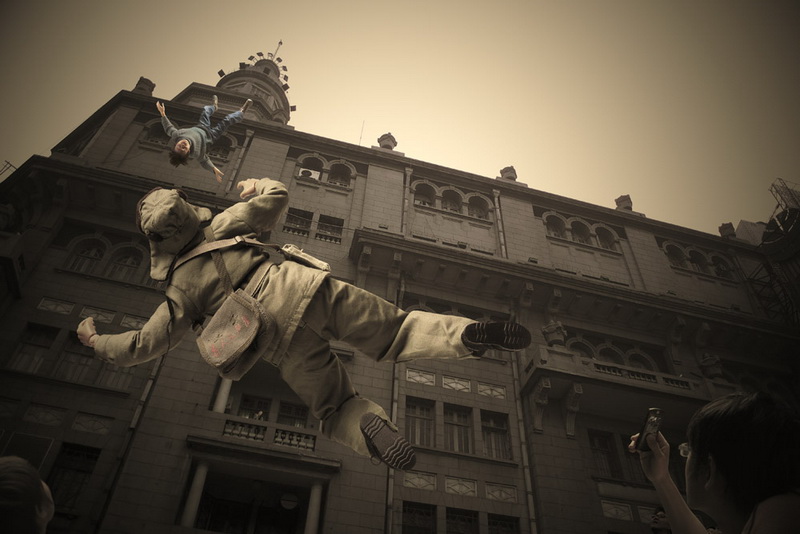
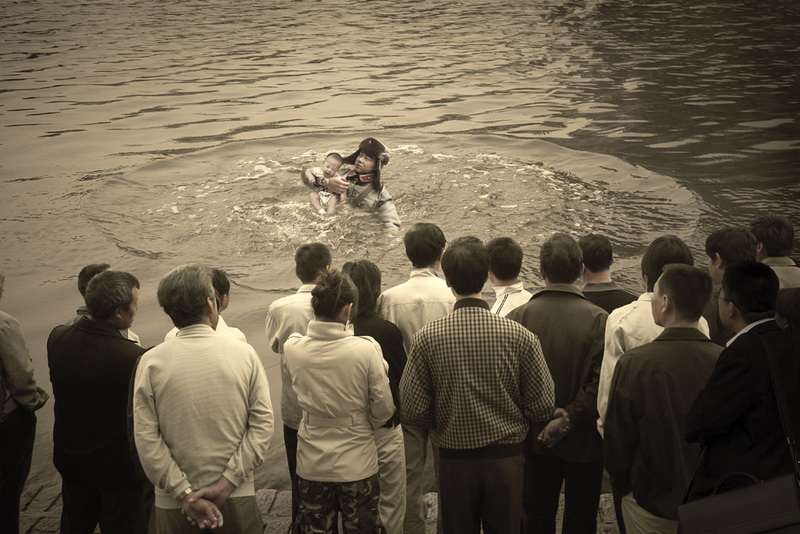

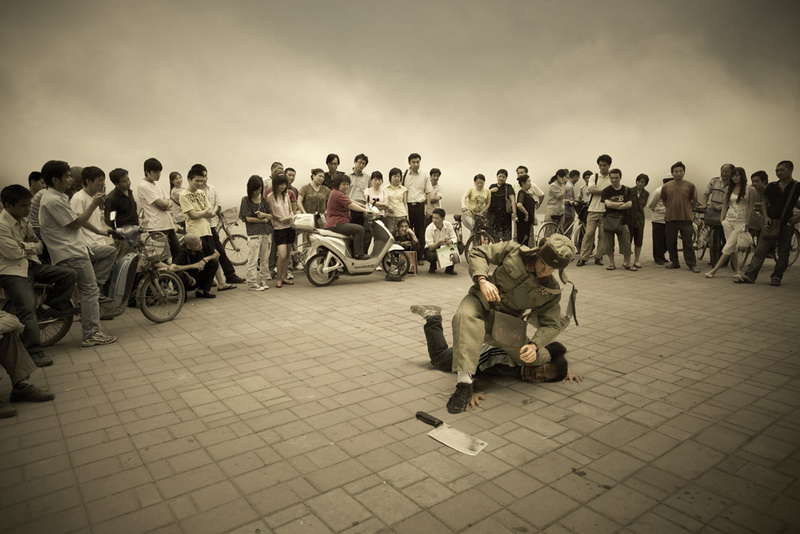
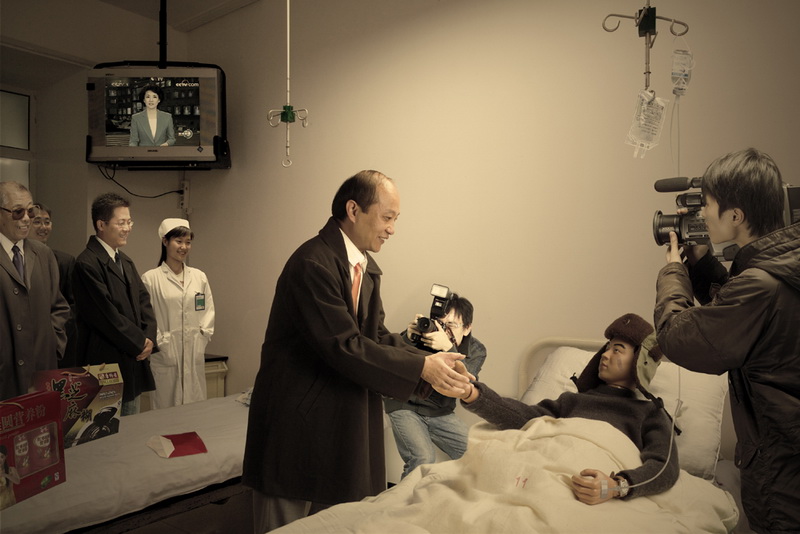

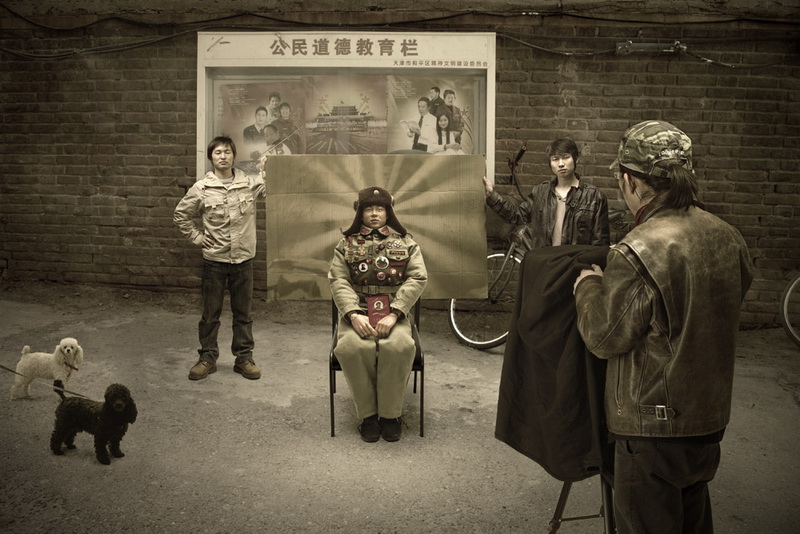




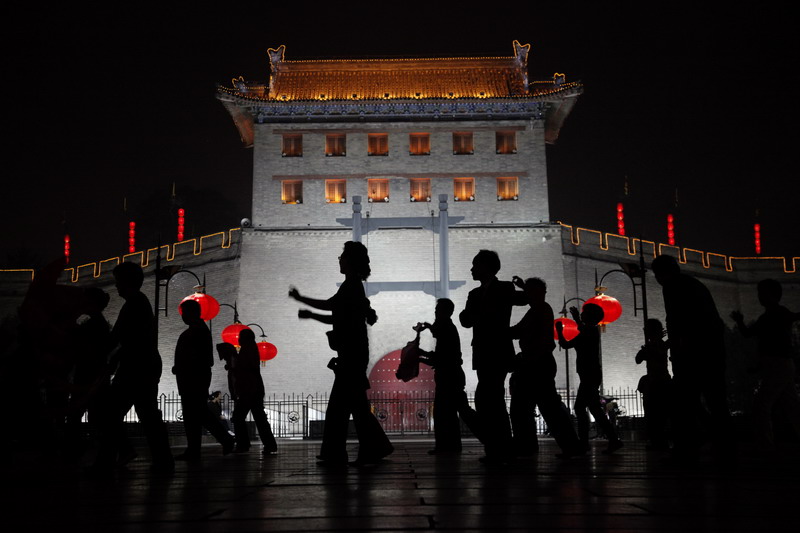
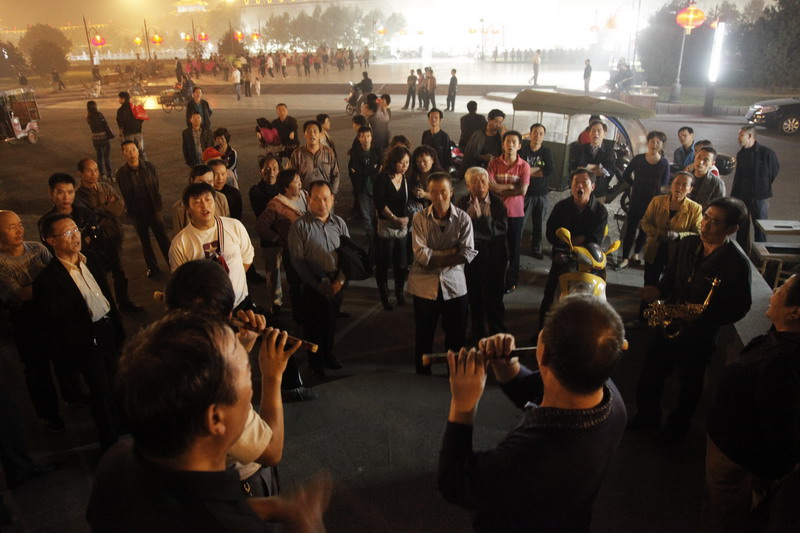
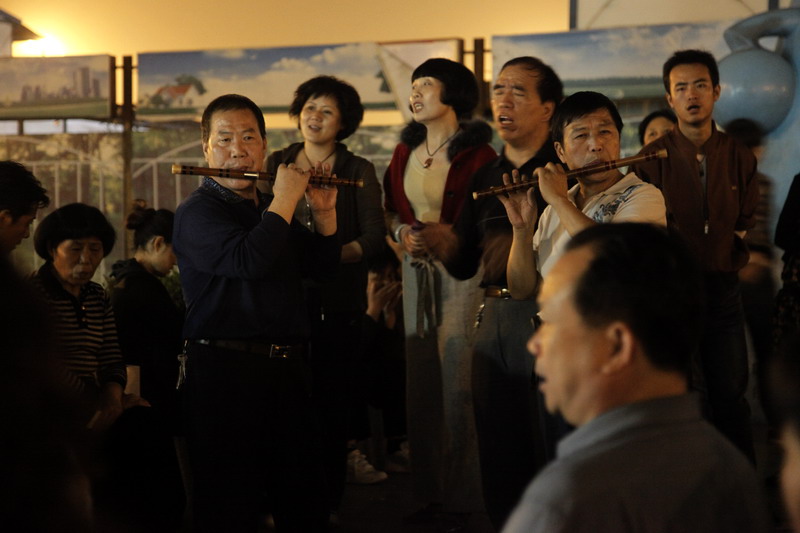
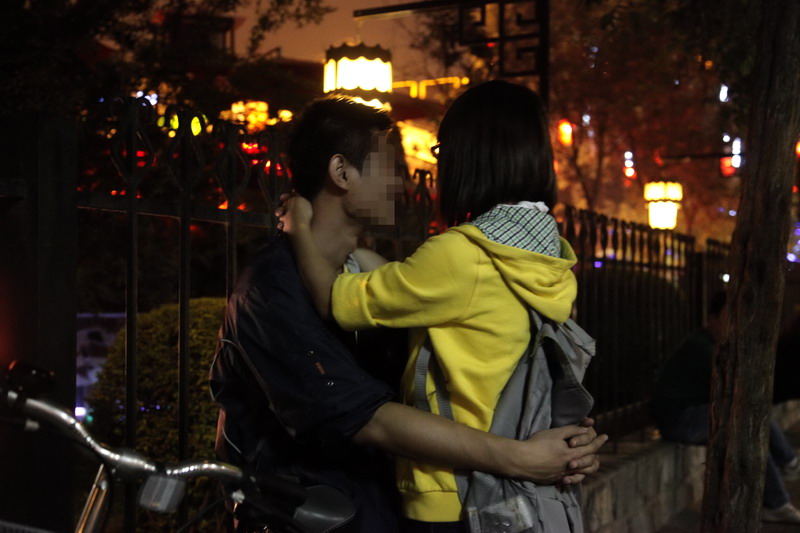

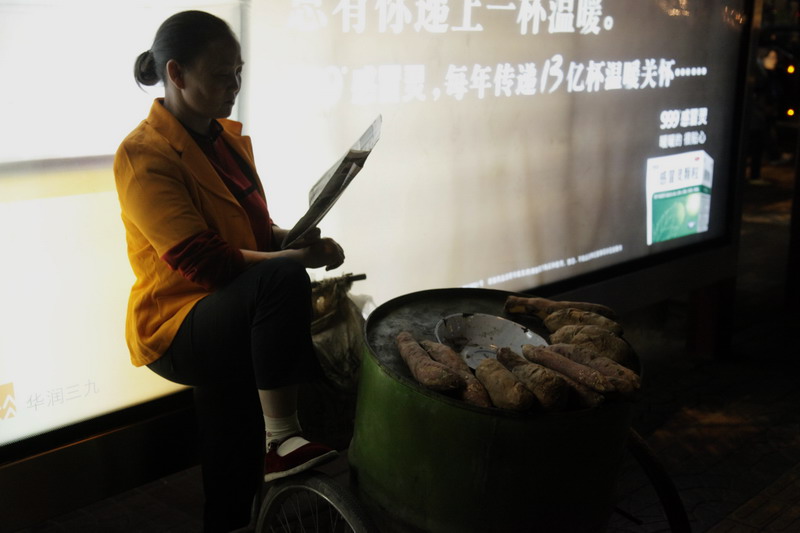


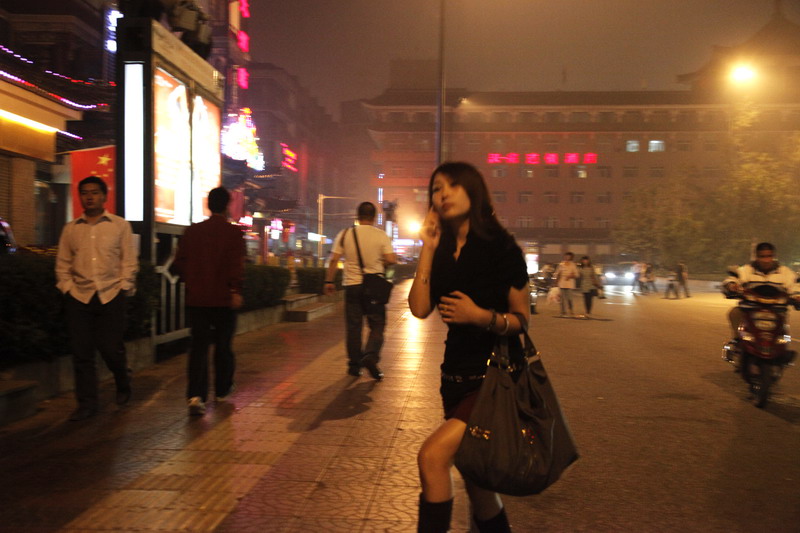
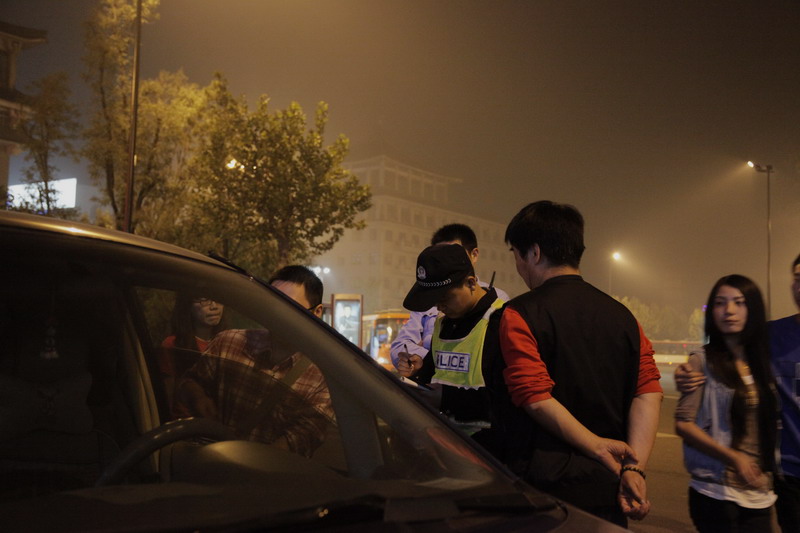
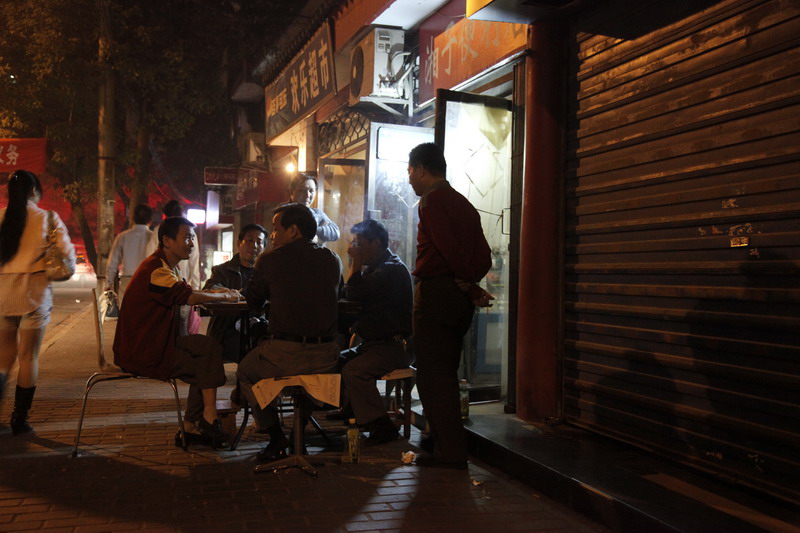
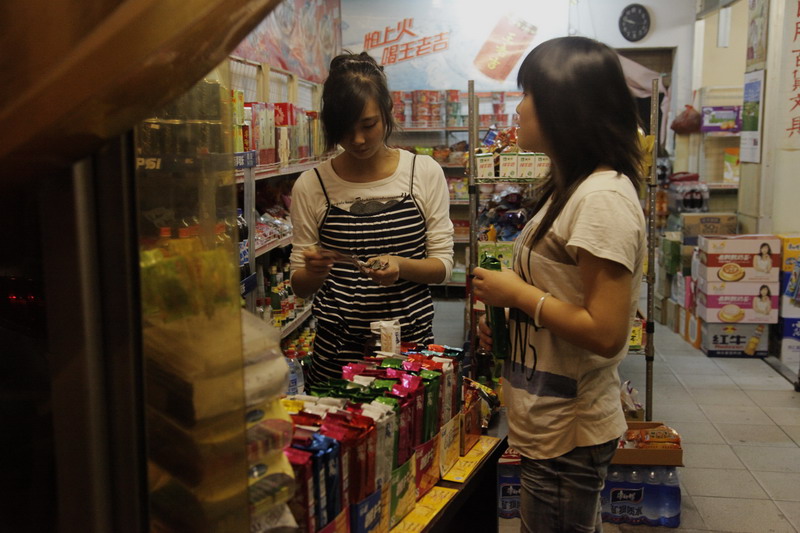
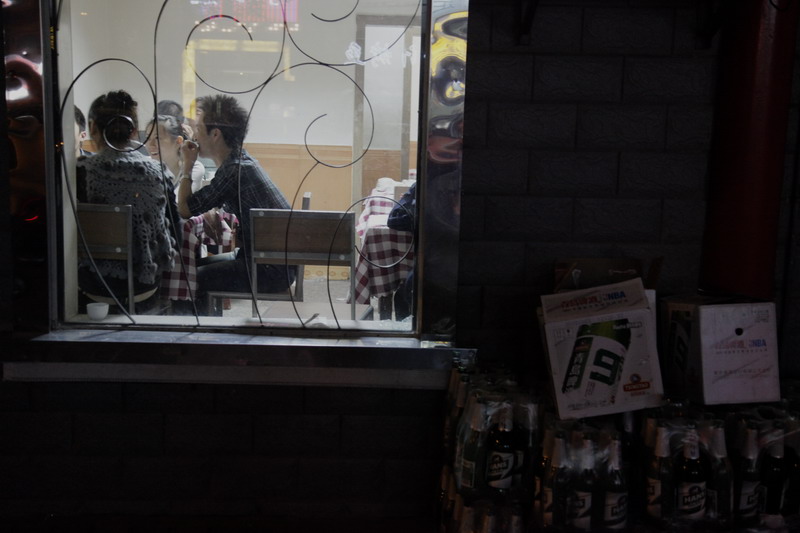
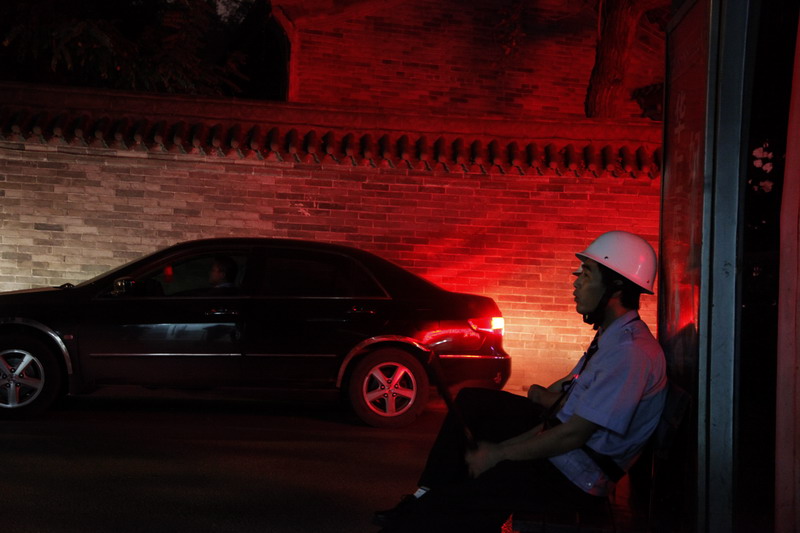
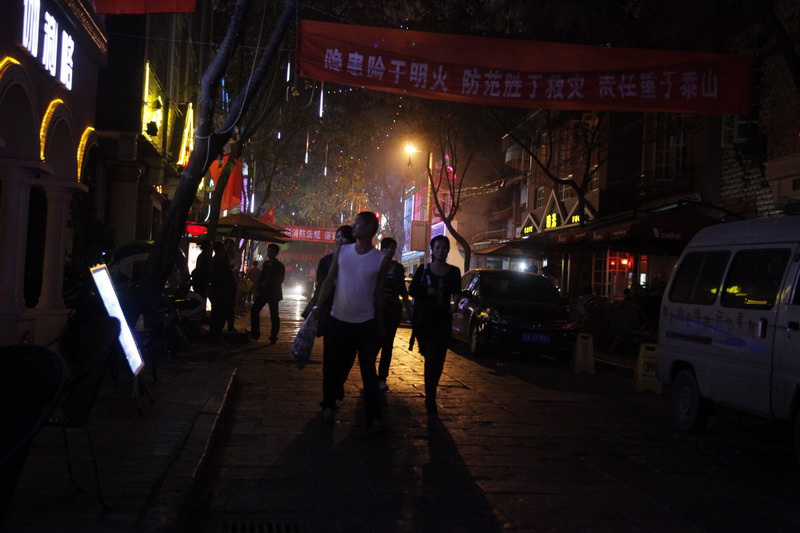
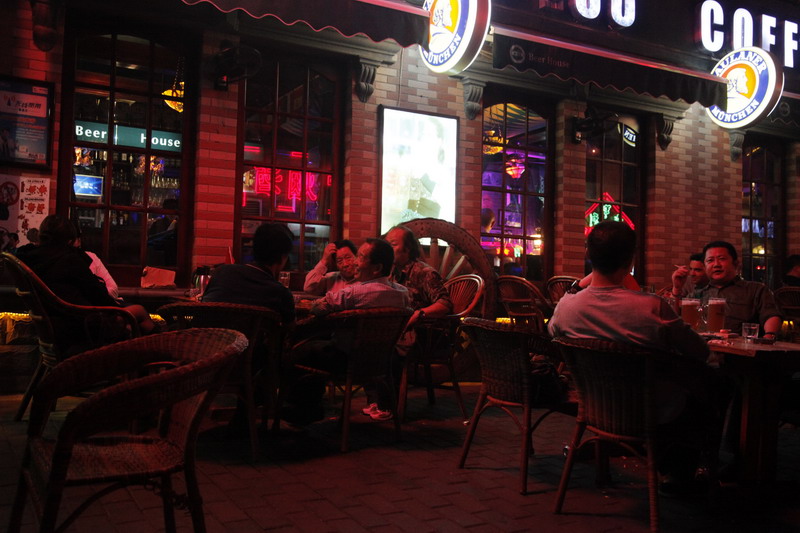

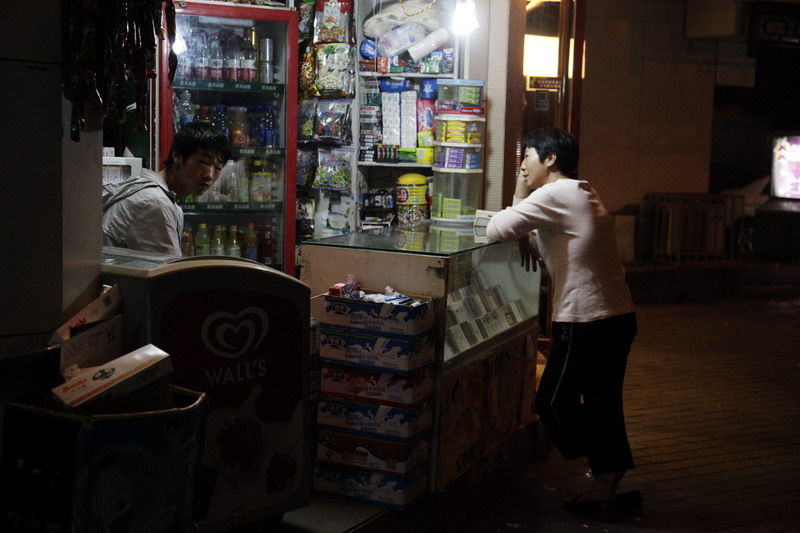
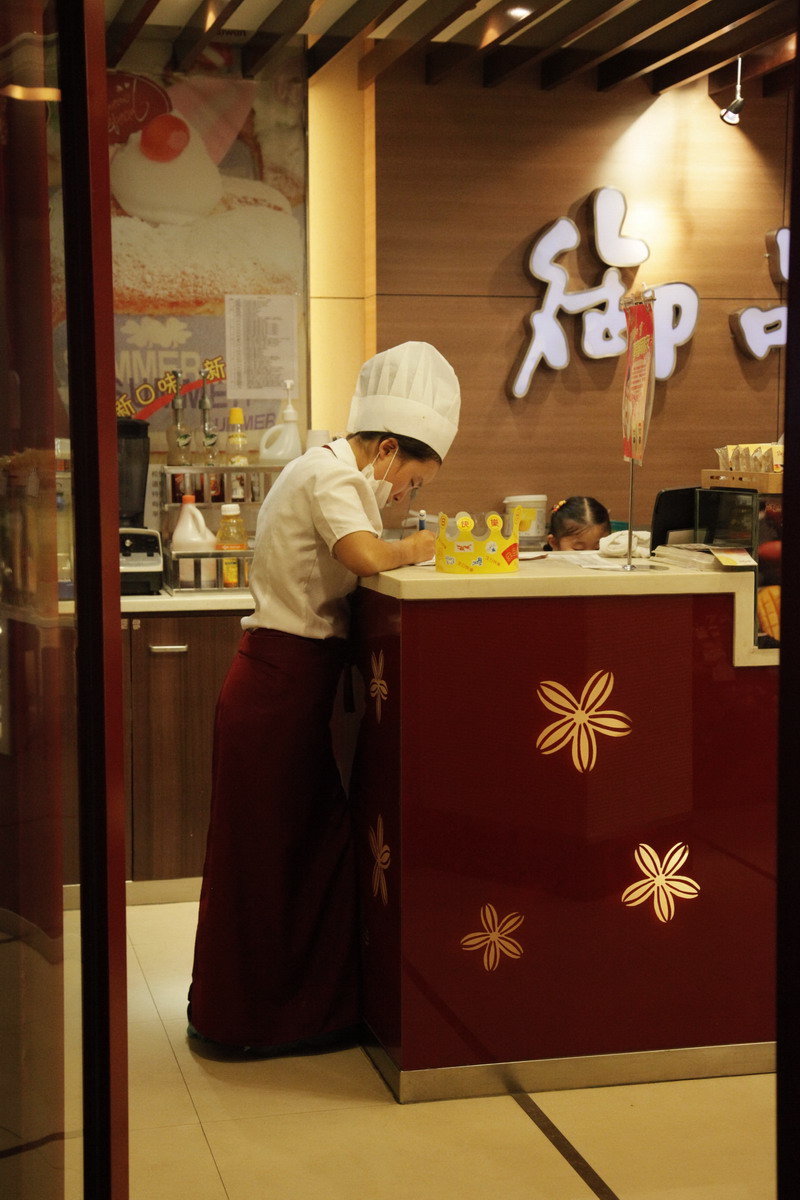
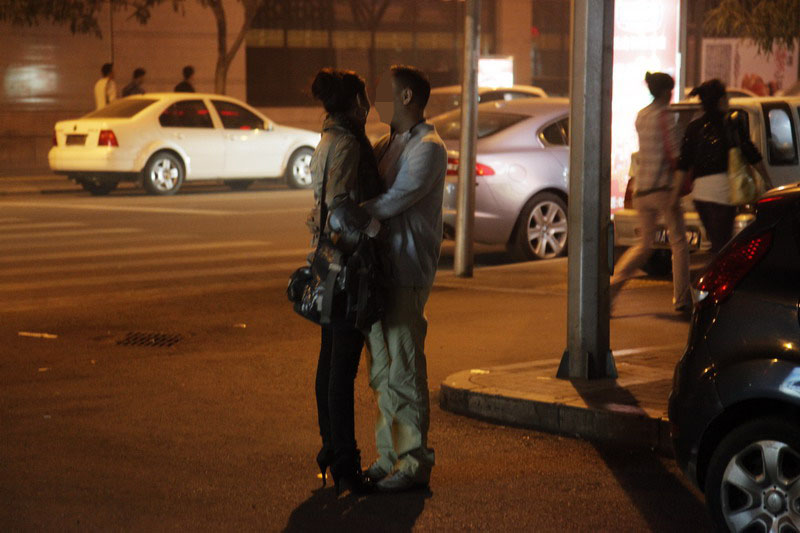
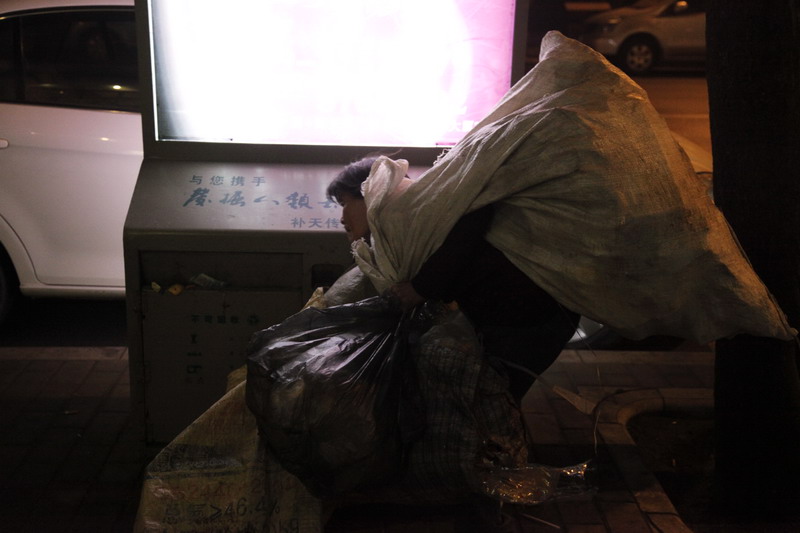

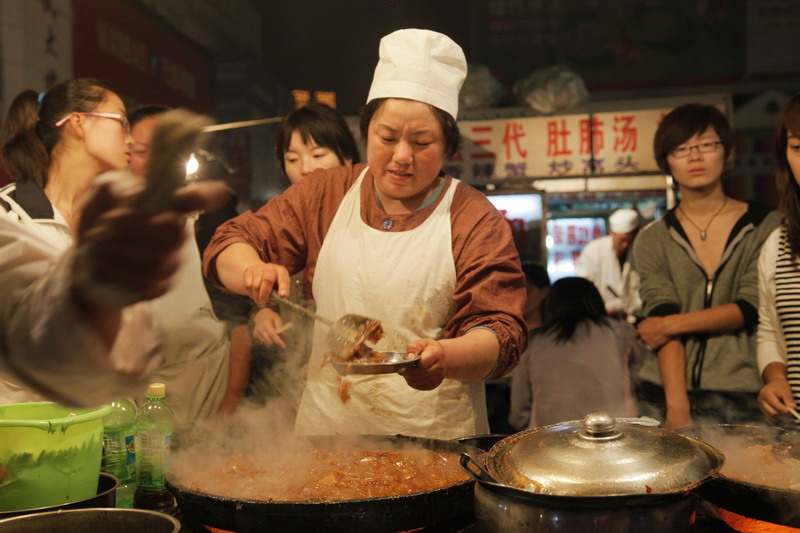
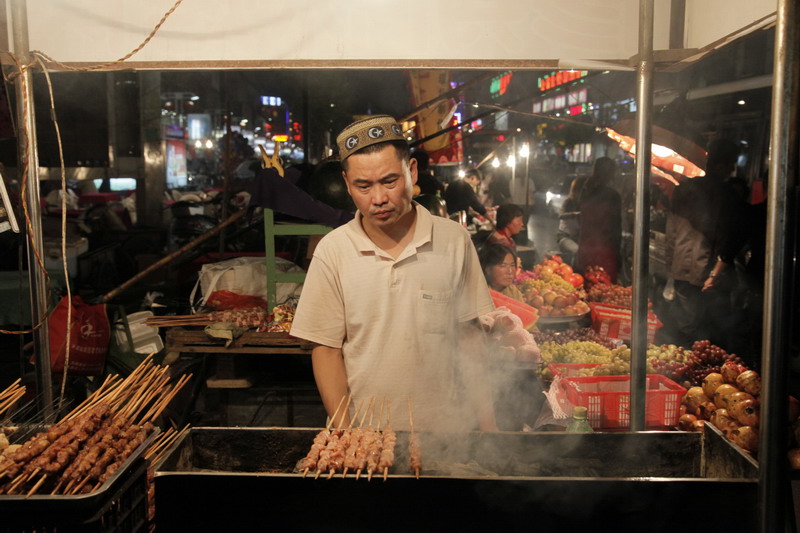
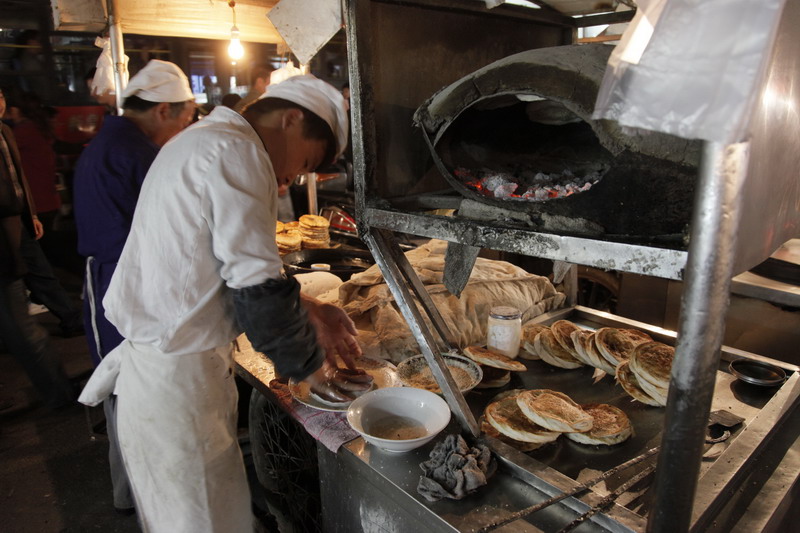
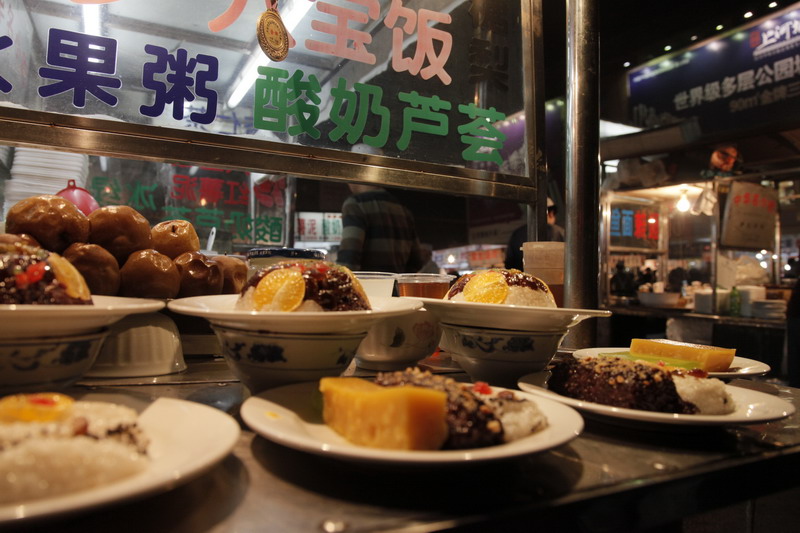
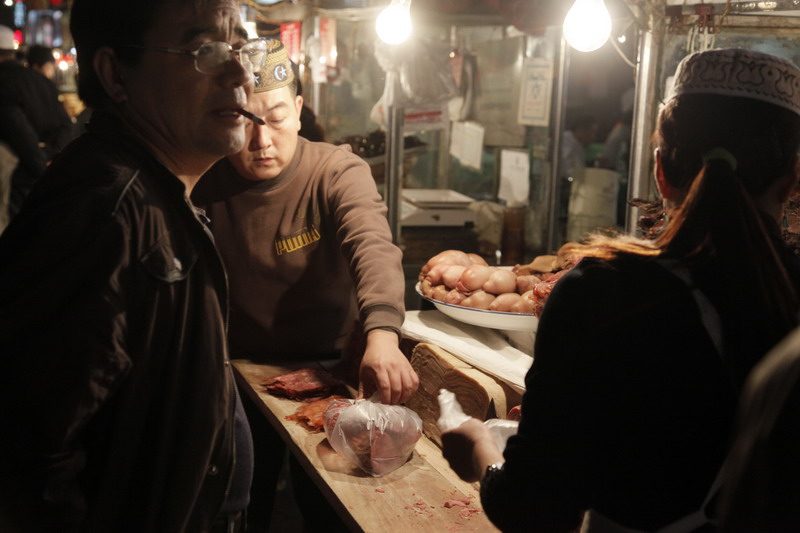
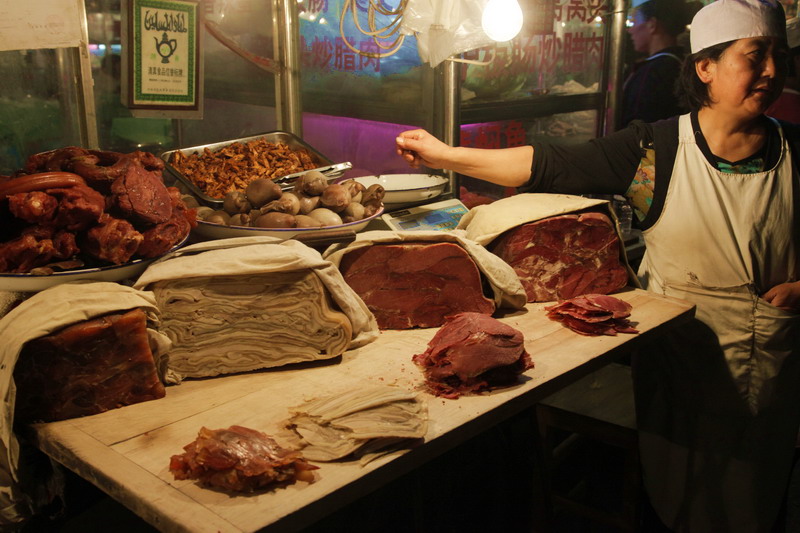
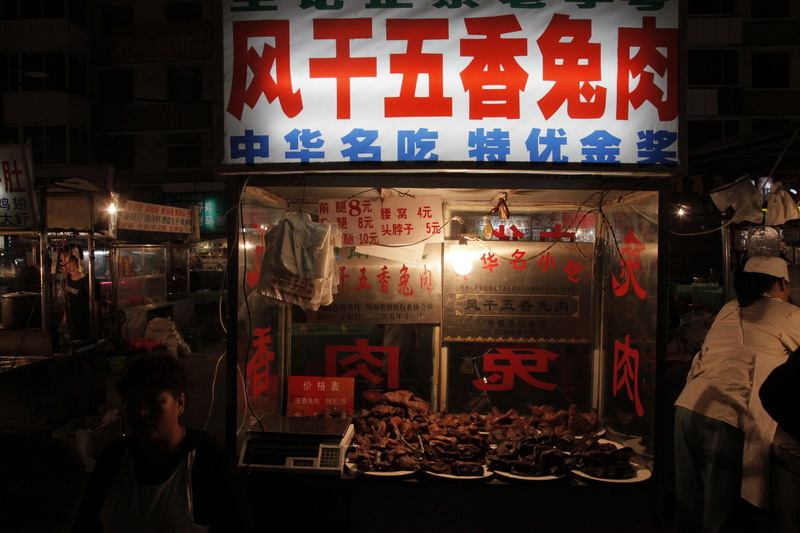
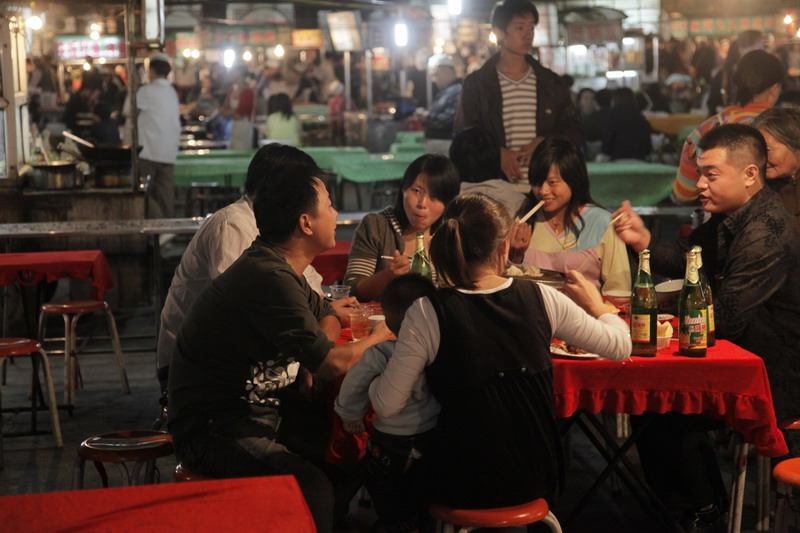


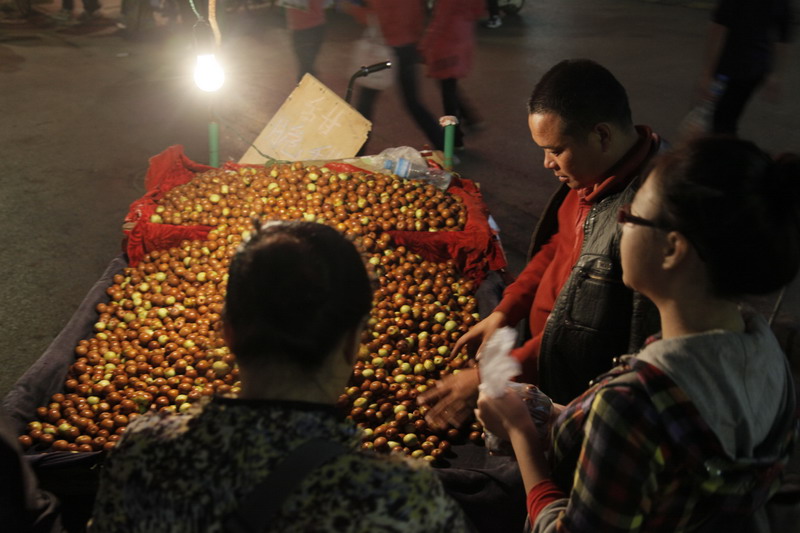
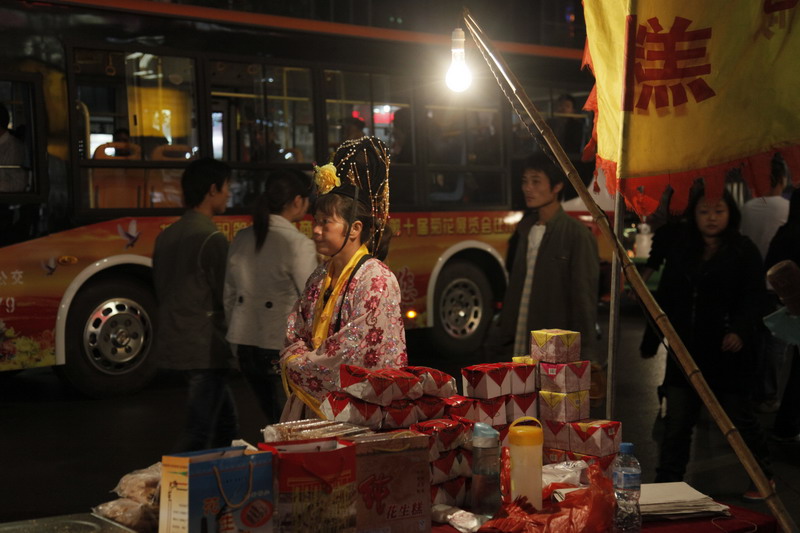


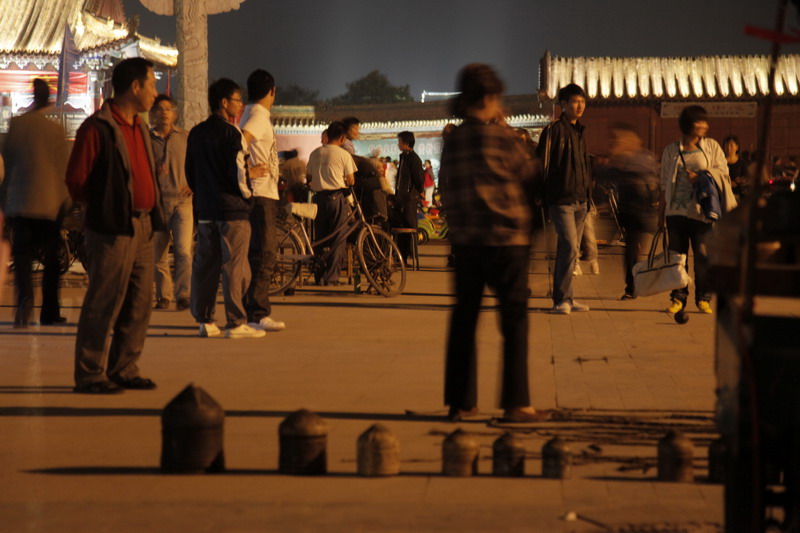

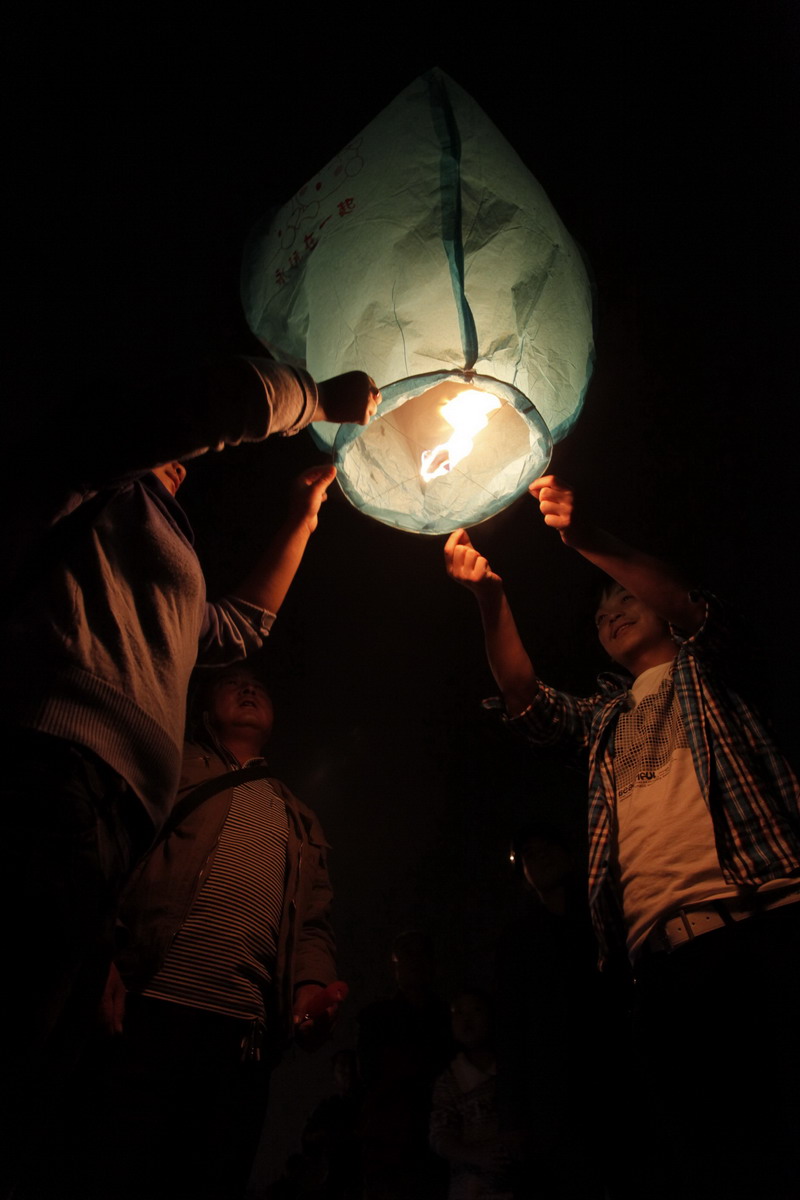
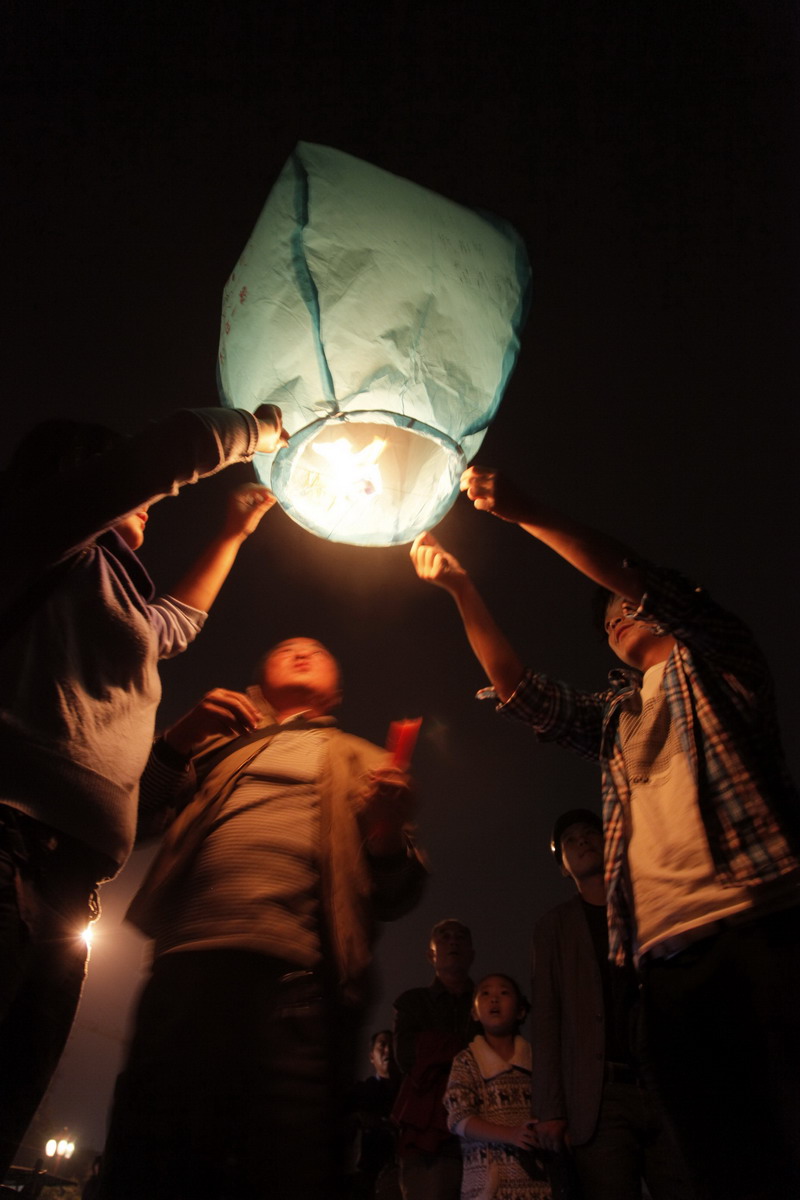



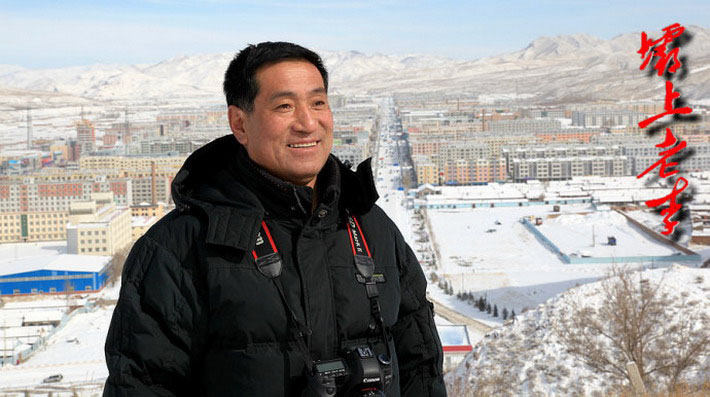



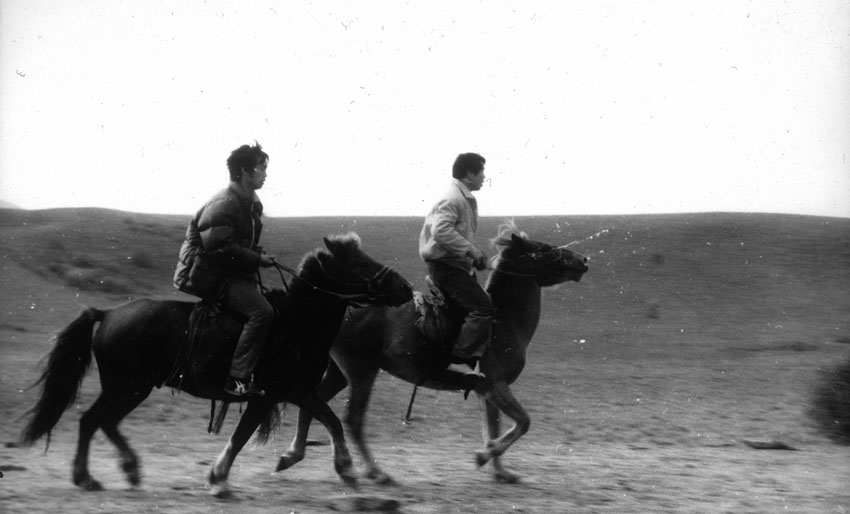
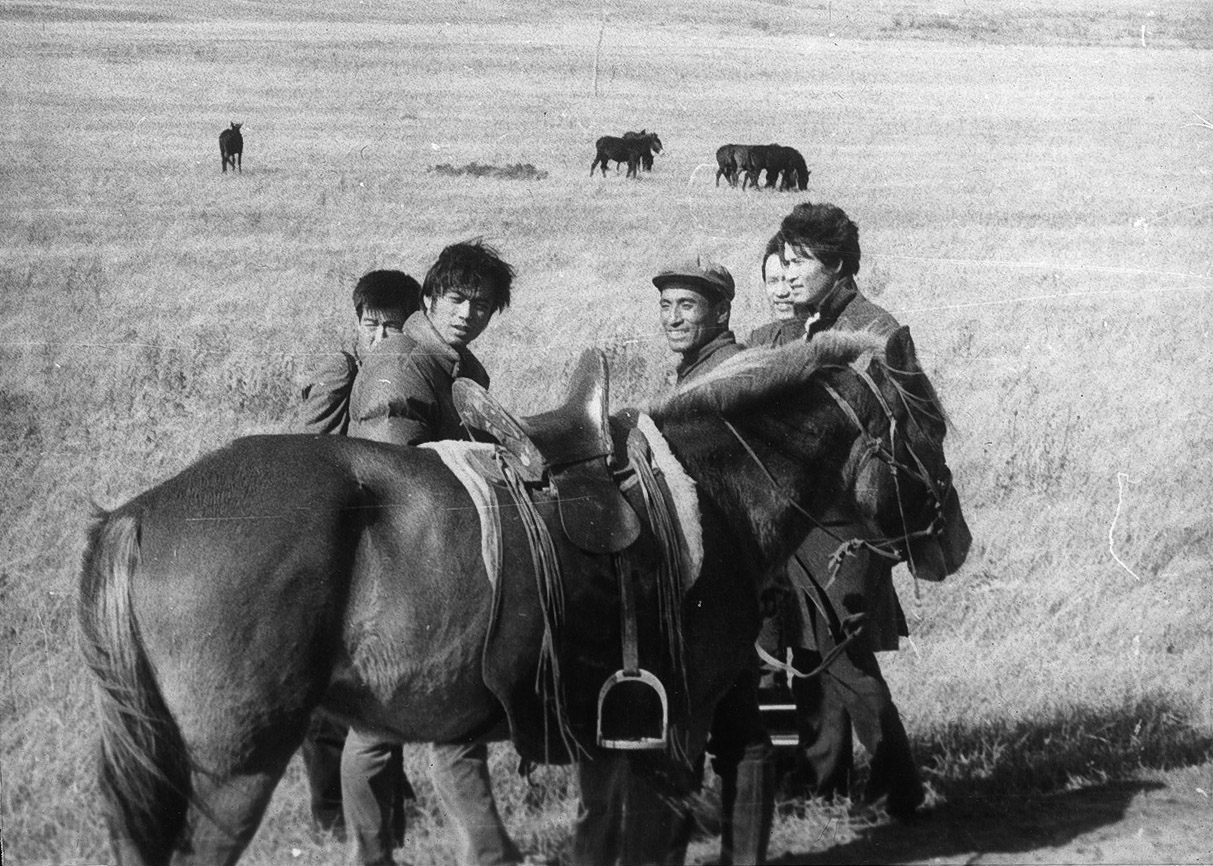
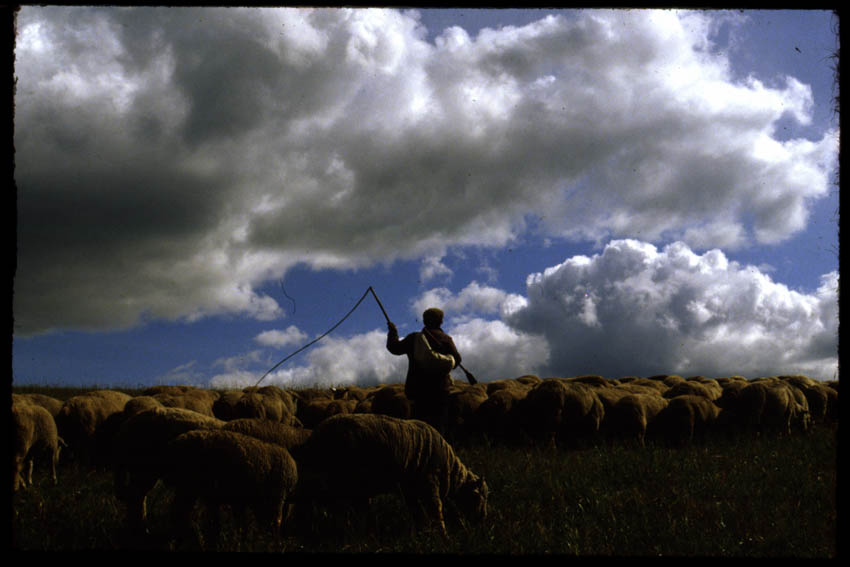
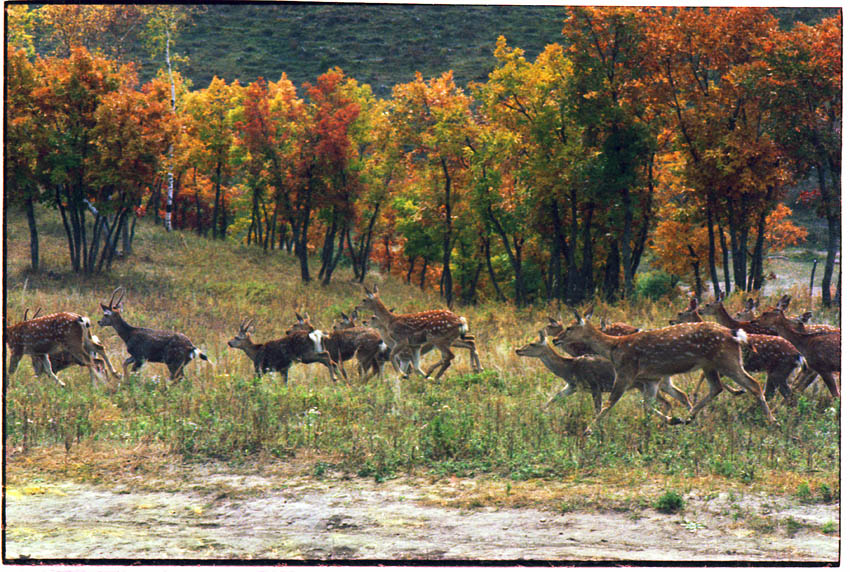
最新评论